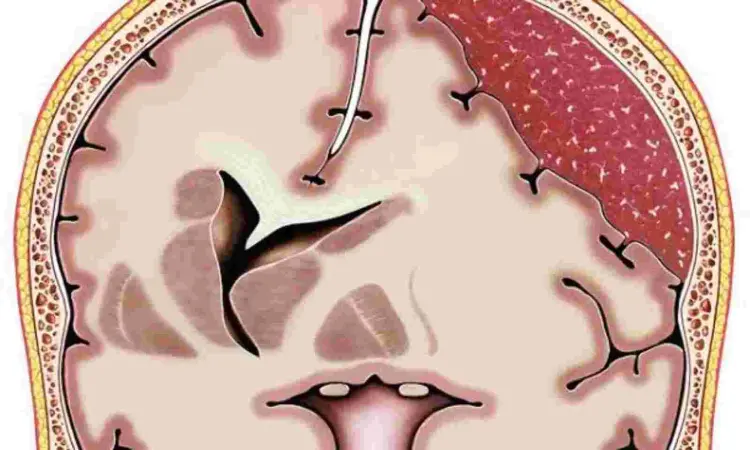- Home
- Medical news & Guidelines
- Anesthesiology
- Cardiology and CTVS
- Critical Care
- Dentistry
- Dermatology
- Diabetes and Endocrinology
- ENT
- Gastroenterology
- Medicine
- Nephrology
- Neurology
- Obstretics-Gynaecology
- Oncology
- Ophthalmology
- Orthopaedics
- Pediatrics-Neonatology
- Psychiatry
- Pulmonology
- Radiology
- Surgery
- Urology
- Laboratory Medicine
- Diet
- Nursing
- Paramedical
- Physiotherapy
- Health news
- Fact Check
- Bone Health Fact Check
- Brain Health Fact Check
- Cancer Related Fact Check
- Child Care Fact Check
- Dental and oral health fact check
- Diabetes and metabolic health fact check
- Diet and Nutrition Fact Check
- Eye and ENT Care Fact Check
- Fitness fact check
- Gut health fact check
- Heart health fact check
- Kidney health fact check
- Medical education fact check
- Men's health fact check
- Respiratory fact check
- Skin and hair care fact check
- Vaccine and Immunization fact check
- Women's health fact check
- AYUSH
- State News
- Andaman and Nicobar Islands
- Andhra Pradesh
- Arunachal Pradesh
- Assam
- Bihar
- Chandigarh
- Chattisgarh
- Dadra and Nagar Haveli
- Daman and Diu
- Delhi
- Goa
- Gujarat
- Haryana
- Himachal Pradesh
- Jammu & Kashmir
- Jharkhand
- Karnataka
- Kerala
- Ladakh
- Lakshadweep
- Madhya Pradesh
- Maharashtra
- Manipur
- Meghalaya
- Mizoram
- Nagaland
- Odisha
- Puducherry
- Punjab
- Rajasthan
- Sikkim
- Tamil Nadu
- Telangana
- Tripura
- Uttar Pradesh
- Uttrakhand
- West Bengal
- Medical Education
- Industry
Subdural irrigation and burr-hole drainage may reduce complications in hematoma patients, finds research

A new study published in the journal of The Lancet found that the patients who had burr-hole drainage with subdural irrigation had lower reoperation rates and similar functional results when compared to patients without subdural irrigation.
One common intracranial emergency that is surgically treated is chronic subdural hemorrhage. In order to remove a chronic subdural hematoma, a burr hole must be created for access, the subdural region must be irrigated and a subdural drain must be inserted. Despite the subdural drain has been developed as advantageous, the curative effect of subdural irrigation has not been explored. Therefore, Rahul Raj and colleagues did this study in order to investigate the efficiency of subdural irrigation in Chronic subdural hematoma.
The FINISH experiment was conducted over 5 neurosurgery centers in Finland that included persons over 18 years of age with a persistent subdural hematoma needing burr-hole drainage. The patients were randomly allocated (1:1) by computer-generated block randomisation with block sizes of 4, 6, or 8 stratified by location, to burr-hole drainage either with or without subdural irrigation. A burr hole was drilled at the site of greatest hematoma thickness in both groups, and the subdural space was either drained or not before inserting a subdural drain that was left in place for 48 hours. The percentage of reoperations within 6 months was the main outcome measured and a non-inferiority margin of 7·5% was established. Important secondary outcomes that were also necessary to determine non-inferiority included the percentage of patients who had poor functional results and the 6-month death rate.
This study evaluated 1644 patients between January 1, 2020 and August 17, 2022, to determine their eligibility. Of these individuals, 589 (or 36%) were treated and randomly allocated to a therapy group. The 6-month duration of follow-up was prolonged till February 14, 2023. 54 (18·3%) out of 295 patients in the group allocated to receive no irrigation and 37 (12·6%) out of 294 participants in the group assigned to receive irrigation were found to require reoperation in the intention-to-treat analysis.
The mortality rate and the percentage of individuals with a modified Rankin Scale score of 4-6 did not differ significantly across the groups. The systemic infections, cerebral hemorrhage, and epileptic seizures were the most common serious adverse events. Overall, the experiment supports the use of subdural irrigation because there were no variations in functional outcome or death between the groups.
Reference:
Raj, R., Tommiska, P., Koivisto, T., Leinonen, V., Danner, N., Posti, J. P., Laukka, D., Luoto, T., Rauhala, M., Tetri, S., Korhonen, T. K., Satopää, J., Kivisaari, R., Luostarinen, T., Schwartz, C., Czuba, T., Taimela, S., Lönnrot, K., Järvinen, T. L. N., … Zeiler, F. A. (2024). Burr-hole drainage with or without irrigation for chronic subdural haematoma (FINISH): a Finnish, nationwide, parallel-group, multicentre, randomised, controlled, non-inferiority trial. In The Lancet (Vol. 403, Issue 10446, pp. 2798–2806). Elsevier BV. https://doi.org/10.1016/s0140-6736(24)00686-x
Neuroscience Masters graduate
Jacinthlyn Sylvia, a Neuroscience Master's graduate from Chennai has worked extensively in deciphering the neurobiology of cognition and motor control in aging. She also has spread-out exposure to Neurosurgery from her Bachelor’s. She is currently involved in active Neuro-Oncology research. She is an upcoming neuroscientist with a fiery passion for writing. Her news cover at Medical Dialogues feature recent discoveries and updates from the healthcare and biomedical research fields. She can be reached at editorial@medicaldialogues.in
Dr Kamal Kant Kohli-MBBS, DTCD- a chest specialist with more than 30 years of practice and a flair for writing clinical articles, Dr Kamal Kant Kohli joined Medical Dialogues as a Chief Editor of Medical News. Besides writing articles, as an editor, he proofreads and verifies all the medical content published on Medical Dialogues including those coming from journals, studies,medical conferences,guidelines etc. Email: drkohli@medicaldialogues.in. Contact no. 011-43720751


